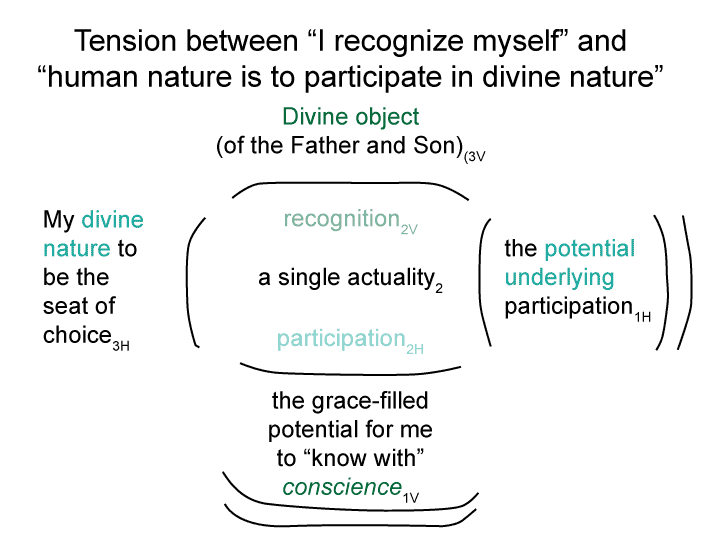Man and Sin by Piet Schoonenberg (1964) 2.2C-1
Summary of text [comment] page 70
[If the model of the nested form carries any lesson it is this:
Independent entities are rarely simple actualities.
Actualities occur in nested forms. They emerge from possibility. They are put into some normal context.
Plus, the actuality may be an intersection. Two actualities combine into one.
If grace and nature are actualities, then what would be their intersection?
Would it be ‘the person’?]

